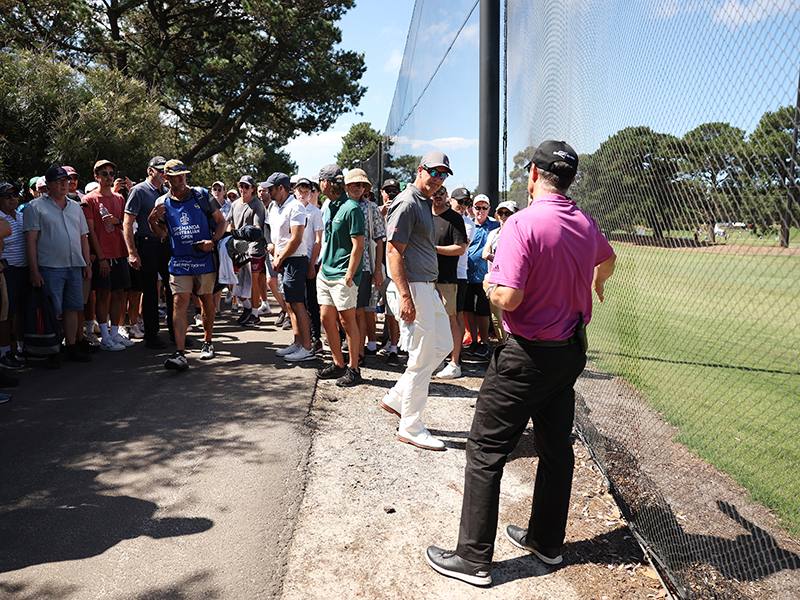5 Common Misconceptions About Strokes Gained
Strokes Gained has become the go-to metric when it comes to analysing golf performance, but here are five caveats to keep in mind


The evolution of statistical analysis in sport has been rapid over the past few years and golf is very much included in that. The advent of the Strokes Gained metric has banished antiquated statistics such as putts per round and greens in regulation (GIR) to the history books.
The reason for that is the relatively poor information players could glean from the aforementioned categories. Simply counting your putts per round or GIR can be very misleading and is so heavily influenced by how close you hit your approach shots or how well you drive the ball respectively. For example, if you hit 18 greens in regulation on a given day, but all to over 40 feet from the hole, then 36 putts would be an exceptionally good day on the greens.

The Golfshot app provides a detailed Strokes Gained breakdown to help golfers assess strengths and weaknesses
However, if you missed all 18 greens and chipped up to three feet every time, then 36 putts would be a pretty poor return. Similarly, if you were having a tough day with your driver and playing the majority of your approach shots from short, crooked tee balls, then three or four greens in regulation could be a really good days work with your irons, whereas if you are booming 300-yard drives down the middle of the fairway all day and only hit three or four greens from there, this could be deemed a really poor return from your approach game.
Thankfully, companies like Golfshot are at the forefront of spreading the significantly more accurate Strokes Gained approach. However, there is still some misunderstanding around it. Here are five common misconceptions about Strokes Gained many golfers may not have realised...
1. Strokes Gained Is Complicated

This is a bit of a two-part answer. Yes, the analysis and methodology behind working out the statistics is complex, but thankfully that has been taken care of for us by some very smart people, so once we have apps like Golfshot in our hands the inputting of your shots is extremely easy and the results are equally simple to decipher. A number value is assigned to each area of your game, either + or -, to show you how you are performing to highlight your strengths and weaknesses.
It's worth mentioning here that a negative value isn't always a true negative - playing in poor weather conditions or an especially difficult golf course can have an adverse effect on your Strokes Gained data, while playing at altitude can make your tee shot Strokes Gained look much better than it actually is, so bear this in mind when crunching the numbers.
2. Strokes Gained Is Just For The Pros

Whilst undoubtedly the best professionals in the world rely heavily on strokes gained data to analyze their games, strokes gained will benefit every player. Most golfers of any level can get a gut feel for how particular areas of their games are performing, but to be able to put a specific value to that feeling is crucial to informing decisions from what to practice, all the way through to what equipment investments may be most prudent.
Subscribe to the Golf Monthly newsletter to stay up to date with all the latest tour news, equipment news, reviews, head-to-heads and buyer’s guides from our team of experienced experts.
Furthermore, the ability to track progress in particular areas of the game can help show whether the work a player is putting in on a facet of their game is paying off or not and can also be a great insight for a coach to identify potential areas of improvement.
3. Strokes Gained Tells You Everything About Your Round

Much like the older statistics, Strokes Gained isn’t immune to being misinterpreted. For example, in the Strokes Gained off the tee category, a player could hit 13 excellent, long, straight drives and on one hole hit two out of bounds and their Strokes Gained number would look very poor despite an otherwise excellent day. It is important to factor this in when conducting any post-round analysis.
4. All Shots Of The Same Length Are Equally Difficult
On a similar note, players should be aware that the Strokes Gained around the green metric doesn’t fully factor in the difficulty of a shot, only the distance and lie when assigning a shot value. For example, one 15-yard pitch shot from the rough could be a pretty straightforward uphill shot with a fluffy lie versus another 15-yard pitch shot from the rough which is nestled down, requiring a carry over sand to a green running away from the player. Once again, the player should consider these circumstances when judging their days work.

Golfshot is an example of a shot-tracking app that can provide Strokes Gained analytics to benchmark your performance
5. Tour Pros Are Perfect
This is a big statement, but if you watch much golf coverage on television you could be excused for thinking that the top professionals don’t miss a shot. What you need to remember though is that the TV cameras are only generally following the top end of the field throughout coverage so these players are right on top of their game. As we generally aren’t seeing the players that week who are missing the cut by three or four shots, we can start to think that dead straight 350-yard drives and mid-irons that are peppering the flagstick are the norm, because that’s all we see, and that can be misleading for how we judge our own games.

Think for a moment, what you would imagine the average proximity to the hole on the PGA Tour is from 100-125 yards - would it surprise you to know that the average is over 20 feet away from the hole? How about those 10-15 foot putts that the top player never seems to miss? Well, the success rate from that range is barely over 30 percent. So for every ten putts from that range, seven are missing.
Learning a little more about Strokes Gained can give you some much-needed perspective on your own golf game.

Joe has worked in the golf industry for nearly 20 years in a variety of roles. After a successful amateur career being involved in England squads at every age group, Joe completed his PGA degree qualification in 2014 as one of the top ten graduates in his training year and subsequently went on to become Head PGA Professional at Ryder Cup venue The Celtic Manor Resort. Equipment has always been a huge passion of Joe’s, and during his time at Celtic Manor, he headed up the National Fitting Centres for both Titleist and Taylormade. He’s excited to bring his knowledge of hardware to Golf Monthly in the form of equipment reviews and buying advice.
Joe lives in North Devon and still plays sporadically on the PGA West region circuit. His best round in recent years came earlier in 2023 where he managed a 9 under par 63 at Trevose GC in a Devon & Cornwall PGA Tournament.
Joe's current What's In The Bag?
Driver: Switch between TaylorMade Qi35 and Callaway Elyte TD - both with Fujikura Ventus Black 6-X
Fairway wood 1: TaylorMade BRNR Copper Mini Driver - Fujikura Ventus Black 7-X
Fairway wood 2: Callaway Apex UW 17˚- Fujikura Ventus Black 9-X
Irons: TaylorMade P7CB 3-PW with Dynamic Gold Tour Issue X100 shafts
Wedges: Callaway Opus 50, 54, and 60 degrees - Project X LS 6.0 shafts
Putter: LAB Golf Oz.1 (zero shaft lean)
Ball: TaylorMade 2024 TP5x
Grips: Golf Pride Tour Velvet 60R
Bag: Vessel Player IV Pro DXR Stand
-
 Is This The Loveliest Course In Mainland Europe? We Think So…
Is This The Loveliest Course In Mainland Europe? We Think So…Having played more than 170 courses in continental Europe, Rob Smith ranks this among the most beautiful
-
 Winter Golf Rebuild: Expert Baseline Tests Revealed Shocking Data About My Game (You Need To Try Them)
Winter Golf Rebuild: Expert Baseline Tests Revealed Shocking Data About My Game (You Need To Try Them)My winter golf rebuild started with a series of baseline tests, conducted by two experts, and I was blown away by the results! Every amateur should try this...